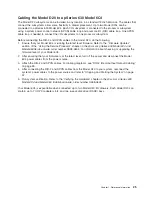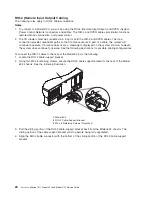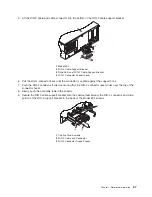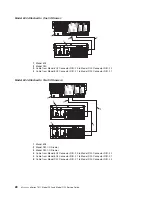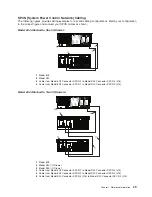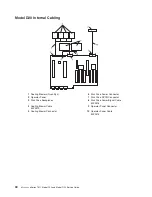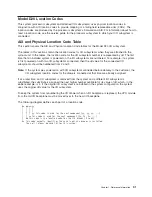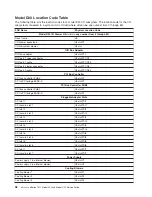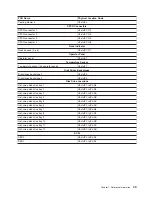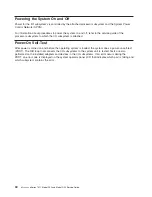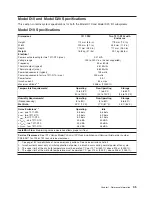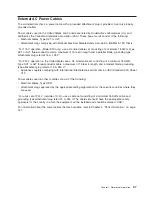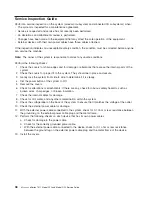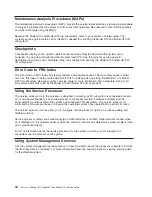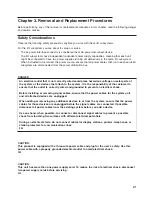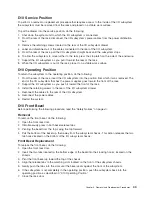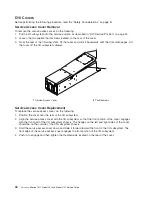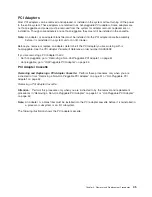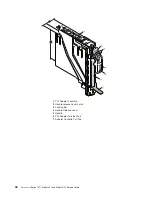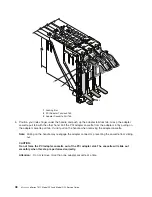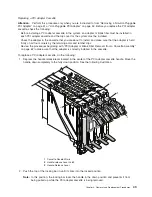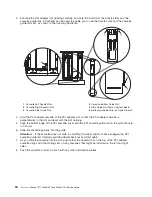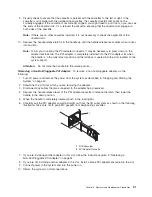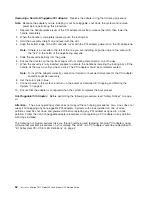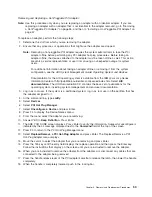
Chapter
2.
Diagnostics
and
Maintenance
Procedures
The
system
uses
an
integrated
set
of
software
diagnostic
procedures
to
help
isolate
failing
components
and
system
maintenance.
This
book,
along
with
the
RS/6000
Eserver
pSeries
Diagnostic
Information
for
Multiple
Bus
Systems
,
is
the
basis
of
the
diagnostic
procedures.
Refer
to
the
system
service
guide
when
running
diagnostics
on
your
I/O
subsystem.
Power
and
Attention
LEDs
The
Power
and
Attention
LEDs
provide
a
means
to
identify
failing
components
in
your
subsystem.
When
a
failing
component
is
detected
in
your
system,
the
system’s
Attention
LED
is
turned
on.
Component
LEDs
To
further
help
you
identify
the
failing
component,
all
system
components
have
individual
LEDs
that
indicate
a
failure
when
lit.
The
LEDs
are
either
on
the
component
itself
or
on
the
carrier
of
the
component
(memory
card,
fan,
memory
module,
or
CPU).
The
LEDs
are
either
green
or
amber
in
color.
A
lit
green
LED
indicates
that
the
system
or
component
is
receiving
power.
A
lit
amber
LED
identifies
a
system
or
component
on
the
system.
The
amber
LED
can
also
indicate
when
a
system
or
component
on
a
system
has
a
problem
or
fault.
For
more
information
on
LEDs
and
their
definitions,
see
Chapter
5,
“Fault
and
Attention
LEDs,”
on
page
173.
Resetting
the
LEDs
To
reset
the
LEDs,
do
the
following:
1.
Replace
the
failing
component
with
the
new
component.
2.
Log
in
as
root
user.
3.
At
the
command
line,
type
diag
.
4.
Select
Task
Selection
.
5.
Select
Log
Repair
Action
.
6.
Select
the
device
that
was
repaired.
(If
the
device
is
not
listed,
select
sysplanar0
.)
Checkpoints
The
system
uses
various
types
of
checkpoints,
error
codes,
and
SRNs,
which
are
referred
to
throughout
your
system’s
service
guide.
These
codes
can
appear
in
the
service
processor
boot
progress
log,
the
AIX
error
log,
and
the
operator
panel
display.
Understanding
the
definition
and
relationships
of
these
codes
is
important
to
the
service
personnel
who
are
installing
or
maintaining
the
system.
Service
Request
Numbers
(SRNs)
are
listed
in
the
RS/6000
Eserver
pSeries
Diagnostic
Information
for
Multiple
Bus
Systems
,
order
number
SA38-0509.
FRU
Isolation
For
a
list
of
error
codes
and
recommended
actions
for
each
code,
see
your
system’s
service
guide.
These
actions
can
refer
to
Chapter
4,
“Parts
Information,”
on
page
161,
“Maintenance
Analysis
Procedures
(MAPs)”
on
page
40,
or
provide
informational
message
and
directions.
If
a
replacement
part
is
indicated,
direct
reference
is
made
to
the
part
name.
The
respective
AIX
and
physical
location
codes
are
listed
for
each
occurrence
as
required.
For
a
list
of
locations
codes,
see
your
system’s
service
guide.
39
Summary of Contents for eserver pSeries 7311 D10
Page 1: ...pSeries 7311 Model D10 and Model D20 Service Guide SA38 0627 01 ERserver...
Page 2: ......
Page 3: ...pSeries 7311 Model D10 and Model D20 Service Guide SA38 0627 01 ERserver...
Page 8: ...vi Eserver pSeries 7311 Model D10 and Model D20 Service Guide...
Page 12: ...x Eserver pSeries 7311 Model D10 and Model D20 Service Guide...
Page 14: ...xii Eserver pSeries 7311 Model D10 and Model D20 Service Guide...
Page 25: ...1 Processor Subsystem 2 I O Subsystem Chapter 1 Reference Information 9...
Page 89: ...Chapter 3 Removal and Replacement Procedures 73...
Page 99: ...2 1 1 Top of Cassette 2 Handle Chapter 3 Removal and Replacement Procedures 83...
Page 179: ...D10 I O Subsystem Parts continued 1 2 3 4 5 6 7 Chapter 4 Parts Information 163...
Page 207: ......

